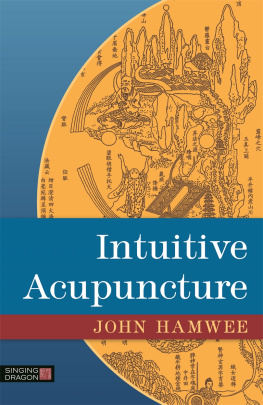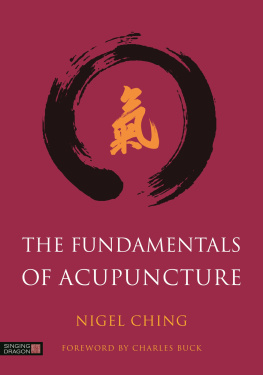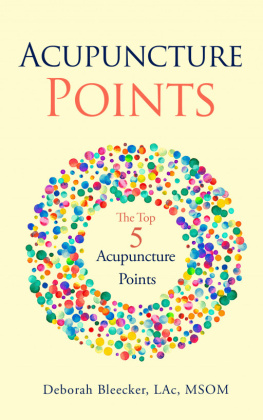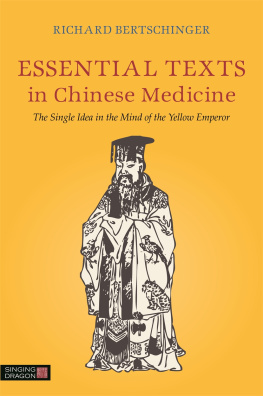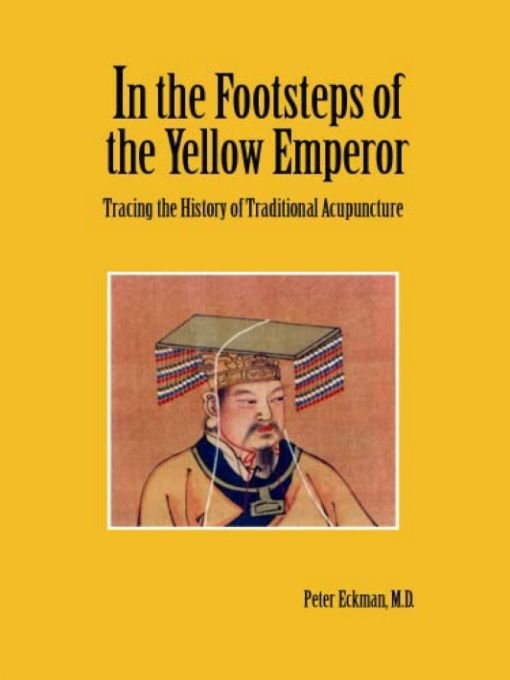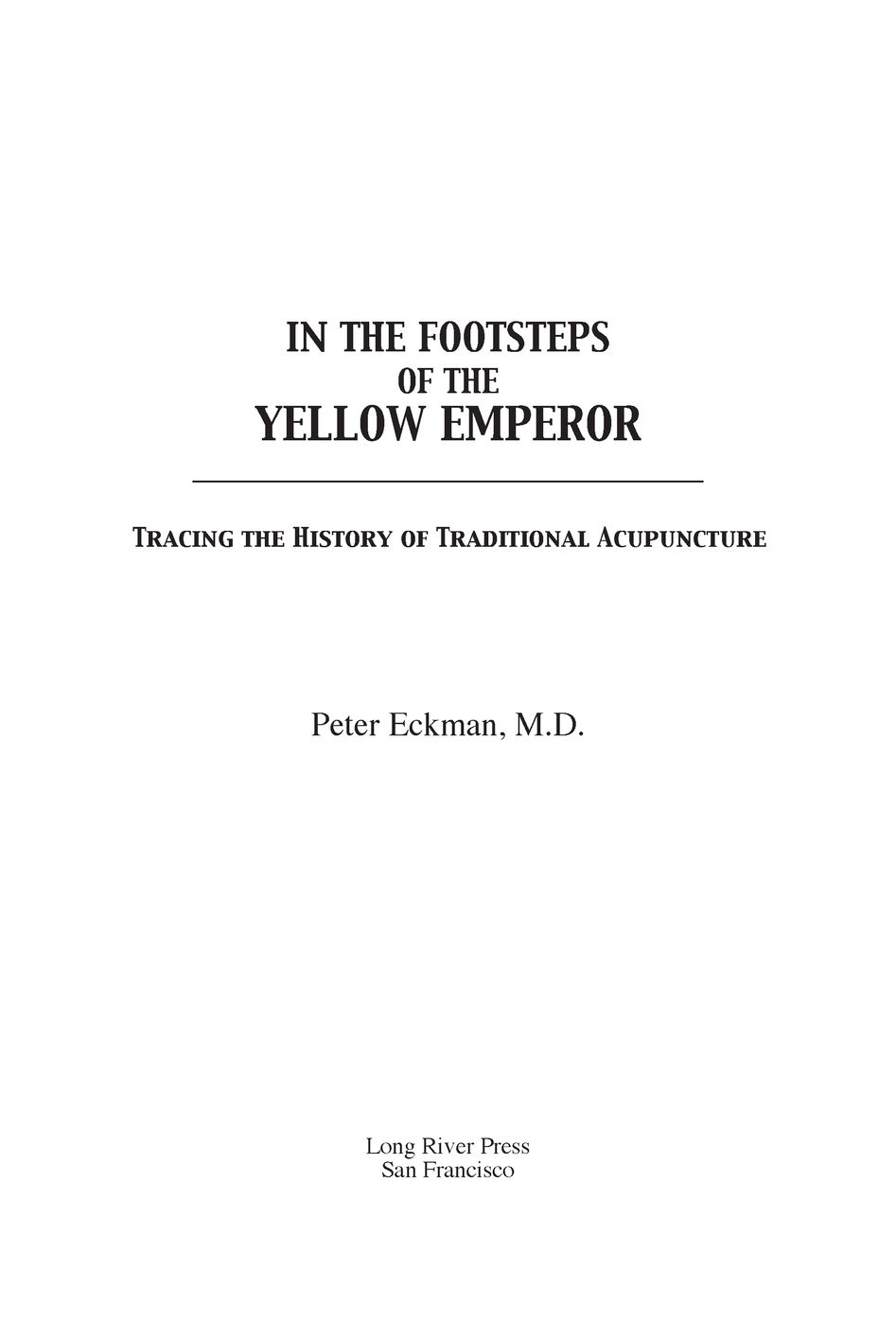Table of Contents
Dedicated to
Yanagiya Sorei and Tobe Soshichiro*
whose lives embodied not just the letter, but the very spirit of traditional Oriental medicine;
whose work helped build the bridge between East and West across which I invite you to travel with me.
* With a special thank you to
Chieko Maekawa
for being my go-between.
PREFACE TO THE PAPERBACK EDITION
Today, with so many books about acupuncture and Oriental medicine available, the interested reader must have some way to select one, or even a few, that will hopefully match their specific interests. I was fortunate that when I began studying acupuncture in the early 1970s there were so few books in English that it was not difficult to simply read them all, but that is no longer a reasonable option. With that observation in mind, I would like to describe some of the unique features of this particular book, so that the reader can better determine if it seems likely to match his or her interests.
I will start by classifying this genre of books, not by their subject matter, but by their types of author, because ones point of view is inevitably colored by ones relationship to the subject at hand. In very broad terms books on this subject have been written by authors with the following backgrounds: sinologists (scholars of Chinese history and culture), professional practitioners, recipients of treatment and interested laity. Let me examine these one at a time.
Sinologists would seem to be the most excellent resource, especially as concerns the history of acupuncture, but one must exercise caution here. For the most part, the sinologists who have written about acupuncture have little or no practical experience of the material they discuss, and so do not have any meaningful criteria with which to judge what is valuable and reliable clinically, as opposed to what merely makes for an interesting story. They do not even have to believe in either the theory or efficacy of the practices they describe, and this is unfortunately the case with some of the current literature.
Professional practitioners, on the other hand, have a stake in how the subject is portrayed. There are literally dozens of styles of acupuncture practice, for example, and each will have its defenders and detractors. Perhaps the biggest split in this regard, is between physicians and non-physicians, who naturally are in competition for the patients health care dollars. Any given practitioner, however, will not necessarily be familiar with the other styles of practice, nor with the long history underlying their profession.
Similarly, patients who have been successfully treated will naturally focus on the style of treatment that worked for them, and will most likely be unaware that other styles of treatment even exist. Finally, lay authors might be expected to be least likely to produce reliable works, as they have neither the education of the sinologists, the training of the practitioners, nor the personal experience of the patients, however they may be excellent writers and storytellers, and for some readers this could be the most compelling criterion.
In this book I have tried to combine as many of these points of view as possible. Writing about Chinese history compelled me to learn a little about the written Chinese language, so I studied under and then taught collaboratively with the late Father Claude Larre, principal compiler of the esteemed Ricci Dictionary of the Chinese language. I am trained as both a physician (M.D. and also Ph.D. in neurophysiology) and an acupuncturist (in Chinese, Japanese, Korean, Vietnamese, French, English and other styles), and have taught this subject to members of both of these professions around the world, as well as having been on the receiving end of various approaches to acupuncture treatment.
In addition to the qualifications mentioned, my interest in the varieties of acupuncture styles which have developed in various countries throughout the world has definitely influenced the writing of this book. As the reader has probably already gathered, my writing is very much in a first hand style, and for that reason is more suited to those who are not put off by informality. I have tried to steer clear of the classically dry academic text type of presentation.
Who then is this book written for? Ideally, I see it as being of value to both the professional and general readership who seek a deeper, personal exploration of acupuncture and Oriental medicine. We live in an era when interdisciplinary studies happen to be in vogue, and the present work certainly cuts across many fields in tracing the history of its subject matter. I welcome you to read further, and I trust the result will be both educational and entertaining.
Peter Eckman, M.D.
San Francisco
2007
ACKNOWLEDGMENTS
My heartfelt thanks to the following individuals who allowed me to informally interview themin person, by telephone or through correspondence: John Amaro, Kenneth Basham, Dan Bensky, Stephen Birch, Johannes Bischko, August Brodde, Vivienne Brown, the late Harry Cadman, Cai Jingfeng, Ursula Cantieni (stepdaughter of the late Heribert Schmidt), Cao Guoliang, Pedro Chan, Mme. Veuve Chamfrault (wife of the late Albert Chamfault), Cecil Chen, Alan Covell, Jon Covell, Ralph Dale, John DAmbrosio, Jacques De Langre, Luc De Schepper, Mark Drue, William Dufty, Bob Duggan, Jean-Marc Eyssalet, Tony Evans, Gerald Fabian, Peter Firebrace, Galen Fisher, Bob Flaws, the late Geoff Foulkes, his wife Gillian Foulkes, Charles Fox, Fukushima Kodo, Robert Gerzon, Joseph Goodman, Claude Gregory, Gerard Guillaume, Hashimoto Mariko (granddaughter of the late Hashimoto Masae), Joe Helms, Margaret Ho (daughter of the late Hsu Mifoo), John Hsu (son of the late Hsu Mifoo), Anton Jayasuriya, Eric W. Johnson, Ted Kaptchuk, Jean-Marc Kespi, Ronald Kotzsch, Kuon Dowon, Michio Kushi, Stuart Kutchins, Keith Lamont, Roger Langrick, Claude Larre, the late Jacques Lavier, his daughter Marie-Christine Lavier, the late Denis Lawson-Wood, his wife Joyce Lawson-Wood, Miriam Lee, Paul Lepron, Leung Kok-Yuen, the late Li Zhi-sui, Liang Shen-ping, Luying Liaw, Lok Yee-Kung, Royston Low, Ralph Luciani, Chieko Maekawa, Felix Mann, Bryan Manuele, David Marks, Julia Measures, Barbara Mitchell, In Moon, Maurice Mussat, Nagayama Toyoko (wife of the late Nagayiama Kunzo), Diane Nathan, Roger Newman-Turner, Jean Niboyet-fils (son of the late Jean Niboyet), Edward Obaidey, Hiroshisa Oda, Ono Bunkei (via his daughter), William Peacher, Rolla Pennell, Manfred Porkert, Qiu Mao-liang, Ren Jianning, Yves Rquna, the late James Reston and his wife Sally Reston, Franoise Riviere, Miles Roberts, his wife Chie Roberts, Sidney and Pat Rose-Neil, Michael Rosoff, Mme. J. Schatz (wife of the late Jean Schatz), K.M. Schipper, the late Heribert Schmidt, Claus Schnorrenberger, Mark Seem, George Serres, Miki Shima, Jim Shores, Shudo Denmei, Siow Yong-Chai, Hillary Skellon (daughter of J.R. Worsley), Nicholas Sofroniou, Sorimachi Taiichi, Malcolm Stemp, Frank Sun, Takenouchi Misao, Eric Tao, Bill Tara, Tashima Sensei, Radha Thambirajah, Tobe Soshichiro, Angela Tu, Paul Unschuld, J.D. Van Buren, Marc Van Cauwenberghe, Nguyen Van Nghi, Solange Voiret, Stuart Watts, Mario Wexu, Allegra Wint, Henry Wong, Louise Wong (niece of the late Hsu Mifoo), J.R. Worsley, John Worsley (son of J.R. Worsley), William Wright, Wu Wei-ping, Shinichiro Yamada, Shizuko Yamamoto, Yanagiya Masako (second wife of the late Yanagiya Sorei) Richard Yennie, Clim Yoshimi, Jeffrey Yuen, and Zeng Guoyuan. My apologies to anyone Ive inadvertantly left outin a work such as this one, I fear it must be inevitable.


